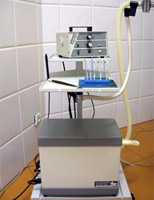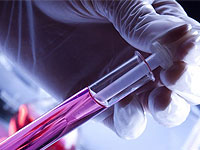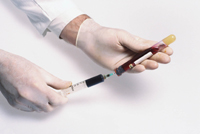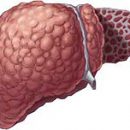Today, thanks to the progress of medicine for the treatment of leukoplakia there are several methods of treatment. The choice of treatment method is determined individually and largely depends on the nature of the disease, the age of the patient, the testimony and contraindications of each technique.
Content
Methods for the treatment of leukoplakia cervix
When the doctor puts the diagnosis of the pathology of the cervix, such as erosion, leukoplakia, ecredopion, and others, as well as the Condylomes of external genital organs, the question always arises before the patient: how to cure this disease?
There are the following methods for the treatment of leukoplakia cervix:
- Chemical Coagulation - Cervical Processing Special Medicine
- Cryodestruction - freezing with liquid nitrogen
- Determocoagulation - Electrical Exposure (diathermocoagulation, DEK)
- Radio wave destruction method
- Laser Aagulation - Laser Impact (Laser Destruction, Laser Vaporization)
Cryodestruction of the cervix
The cervical cryodestruction is the method of treatment, which is based on coagulation by cold fabrics. During this procedure, the electrode is applied to the cervix, on the surface of which low temperature is created. The main advantages of the method of cryodestruction are painlessness, bloodlessness, does not cause scar cervical changes, the minimum number of complications, the activation of immunoreactive systems of the body.
The disadvantages are:
- Shortening of the cervix after cryotherapy
- Abundant liquid discharge during healing
- Minor depth of exposure
- The possibility of recurrence of the disease, especially in women with impaired menstrual cycle
Electro-generation
Electro-generation is widely available and is often used in practice. However, at the same time, the methods surrounding healthy fabric are strongly damaged, coarse scars may form. The procedure is pretty painful, healing is long, chronic inflammatory processes of appendages can exacerbate, bleeding occurs when the stamp. Relations are possible. Scars after electrocoagulation can cause complications in subsequent births and lead to the need for cesarean section.
Radio wave surgery
Radio wave surgery is a non-contact method of cutting and coagulation of soft tissues using a high frequency radio wave. High-frequency energy concentrates on the tip of the electrode, heats the fabric and actually evaporates the cage. In this case, the direct contact of the electrode with the cells is absent, and the electrode itself does not heat.
Unlike the enetrocoagulation when using the radiosurgical method, the effects on the tissue is not accompanied by mechanical destruction of cells and necrosis of the surrounding tissues. Fabric destruction when exposed to radio wave several times less than when using any other eleturogric tool. Possibility of use in born women (healing without scar formation).
Laser Surgery
 Laser surgery today is the method of choosing the treatment of cervical diseases and outdoor genital organs.
Laser surgery today is the method of choosing the treatment of cervical diseases and outdoor genital organs.
Laser surgery has a number of advantages over other known methods of treatment, which for a woman, first of all, is that the procedure is painless, does not require large restrictions in life mode, it is performed (usually) once, the result is estimated after 4 weeks and the disease is not repeated. From the point of view of medicine, laser surgery does not leave scars and deformations, therefore, does not affect subsequent pregnancies and childbirth, can be applied in not giving birth to women.
Laser surgery is performed through the colposcope and therefore limited to healthy tissues. The method of exposure to the laser provides for greater accuracy, both on the depth and on the surface of the affected area.
The procedure is carried out outpatient, for 5-8 day of the menstrual cycle. After removing the pathologically modified tin tissue, the zone of superficial necrosis is formed within healthy tissues. It contributes to rapid stamp rap and early healing. Scarring and narrowing necks are not observed. The advantages of the application of laser surgery are: painlessness, aseptic, bloodlessness, the formation of a thin coagulation film that impedes the penetration of infection to the subjectable fabric.
Thus, the diversity of methods for treating cervical diseases indicate the need for a differentiated approach to the choice of the treatment method, taking into account the nature of the disease, the age of the patient, the testimony and contraindications of each technique, efficiency and atraumaticity.









